Explore the Histories of Northamptonshire Interactive Timeline
Roman and Early Medieval
43 to 1066 CE
The Romans bring a new culture, towns and roads, whilst the later settlements by Anglo-Saxon peoples evolve into the early medieval communities that are first called Northamptonshire.
Roman Wall Plaster
Painted wall plaster from the bath house wall of the Hunsbury Roman villa, with the rare depiction of a woman's face.
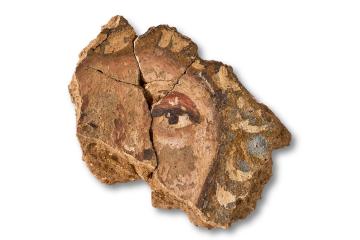 ©
NMAG
©
NMAG
Irchester Bowls
A collection of bronze vessels, known as the Irchester bowls, found in 1874 at the site of Irchester Roman town, near Wellingborough.
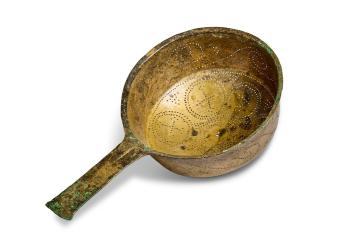 ©
NMAG
©
NMAG
Roman Chatelaine
This astonishingly well preserved example of a chatelaine (collection of personal grooming objects), is a high-status object made to be seen as much as used.
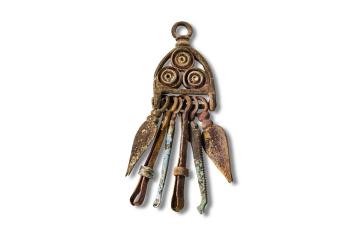 ©
NMAG
©
NMAG
Roman Spindle Whorl
Marked with the name of the Roman woman who used it, spindle whorls were used to spin wool into yarn to make clothes.
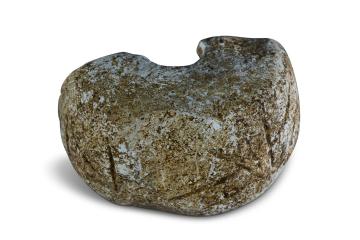 ©
NMAG
©
NMAG
Anglo-Saxon Pot
One of the objects buried with an Anglo-Saxon male in the later 6th century, this beautifully decorated pottery vessel is stamped with triangular indentations.
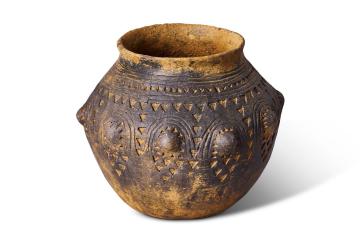 ©
NMAG
©
NMAG
Wakerley brooch
Excavated from a burial in an Anglo-Saxon cemetery, this square headed brooch is unusual in being marked with a runic inscription on the back.
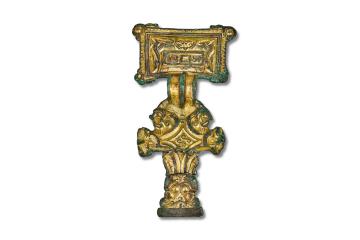 ©
NMAG
©
NMAG
Desborough Necklace
Dating to the late 7th century the Desborough necklace belonged to a high status Anglo-Saxon woman and is likely to be explicity Christian in meaning.
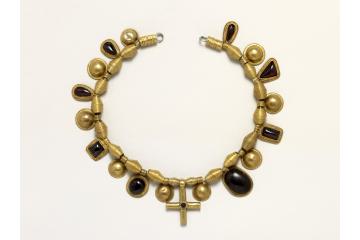 ©
The Trustees of the British Museum
©
The Trustees of the British Museum
Viking Silver Coin
There is limited evidence of Viking influence in Northamptonshire and despite being minted during Viking rule this silver coin from Northampton depicts an Anglo-Saxon king.
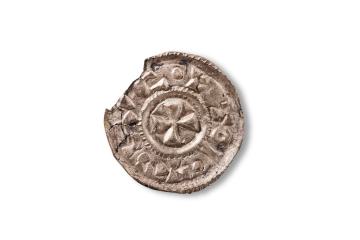 ©
NMAG
©
NMAG
